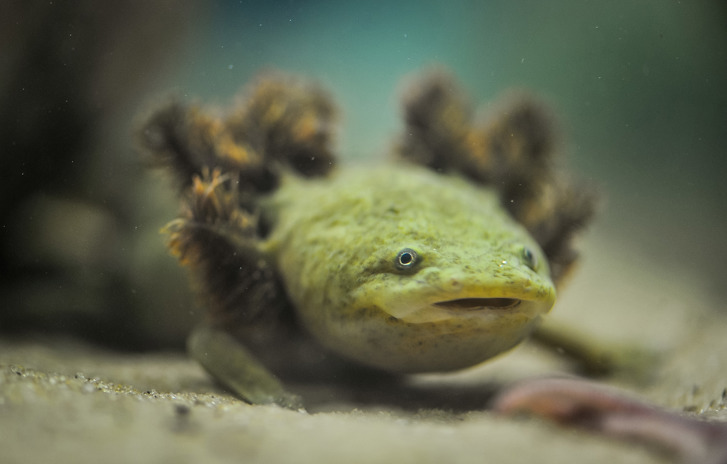
High-tech hope for rare amphibians living in a single lake in Mexico
It's incredibly difficult to tell these Critically Endangered salamanders apart, and just as tricky to tag them.
But alongside nuns and academics, we have successfully trialled a way to safely ID-chip 80 rare achoque salamanders, which will help us protect their relatives in the wild.
There may be as few as 150 achoque salamanders left, all living in a single place: Lake Pátzcuaro.
We desperately need a way to identify them and quickly establish their health status so we can better protect them, but we didn't want to risk endangering them by using an unsuitable ID method.
So, our experts devised a study where salamanders cared for by people in Mexico and the UK were implanted with tiny ID chips to check whether the microchips, which are roughly the size of a grain of rice, would stay in place if used on the dwindling wild population.
Researchers here at the zoo devised a specific implantation method to make putting the chips in place as stress-free and safe as possible.
The process was led by Adam Bland, our Assistant Team Manager for Amphibians, whose study was published with colleague Dr Gerardo Garcia and coauthors Dr Omar Dominguez, Dr Rodolfo Perez and Dr Richard Preziosi in JZAR journal recently.

A colony of achoques in the care of Domincan nuns at the Monasterio de la Virgen Inmaculada de la Salud, provided 28 of the animals used in the study.
Thirteen more lived behind the scenes here at Chester Zoo, while 26 came from the Centro Regional de Investigaciones Pesqueras Patzcuaro and another 13 are cared for at the Universidad Michoacana de San Nicolás de Hidalgo.

We were chipping them with the nuns watching protectively. It’s a real demonstration of how anyone can be involved in conservation. People from all different backgrounds are working to save this species.
Adam Bland, our Assistant Team Manager for Amphibians
The nuns care for hundreds of salamanders living in tanks in the monastery. Traditionally, achoque are used to create cough medicine, but when their numbers drastically dropped in the 1980s, the Sisters started breeding them, in the process creating a lifeline for the species.
Meanwhile, Mexican and UK conservationists are working with local communities to protect achoque eggs, breeding more salamander insurance populations at places like Chester Zoo, engaging in environmental restoration work and undertaking genetic testing to ensure the species remains diverse enough to survive into the future.
The microchips will enable conservationists to identify individual wild-living salamanders during catch-and-release checks, and to access their data, including sex, health and approximate age, with a quick scan. This will also help us accurately evaluate how many salamanders still remain in the wild.
Because of their aquatic lifestyle and unique regenerative biology, amphibians and salamanders in particular cannot always easily be tagged, ringed or marked. That same weird biology means amphibian species can absorb microchips into their body and excrete them, or push them back out through their permeable skin!
Adam Bland, our Assistant Team Manager for Amphibians
Every species is unique and marking techniques for amphibians often have to be species specific It's also crucial that the process doesn’t affect the animals’ health.
The study checked back in with the achoques 20 days after the chips were implanted and monitored their behaviour for the next four months. No major changes were reported; the chips stayed in place and the study found they caused no long-term health impacts on the 80 salamanders.
"Getting people interested in a salamander that lives 12m down in the mud at the bottom of a lake is difficult, but they really are interesting and have a lot of cultural value to local communities. There’s a real chance of having a positive conservation impact for achoques and other misunderstood species." said Adam Bland, our Assistant Amphibians Team Manager

Paul Bamford, Regional Field Programme Senior Manager for Latin America at the zoo, is working with multiple organisations to coordinate achoque conservation efforts.
Freshwater ecosystems in general are important both for human wellbeing and for biodiversity. Central Mexico is a zone where local communities and unique animals depend on freshwater environments like Lake Patzcuaro.
Lake Patzcuaro sits in an endorheic drainage basin, which means that it doesn’t have an outflow. When pollutants flow into the lake, they stay there. The water level is dropping because of climate change, so the contaminants are becoming more concentrated.
